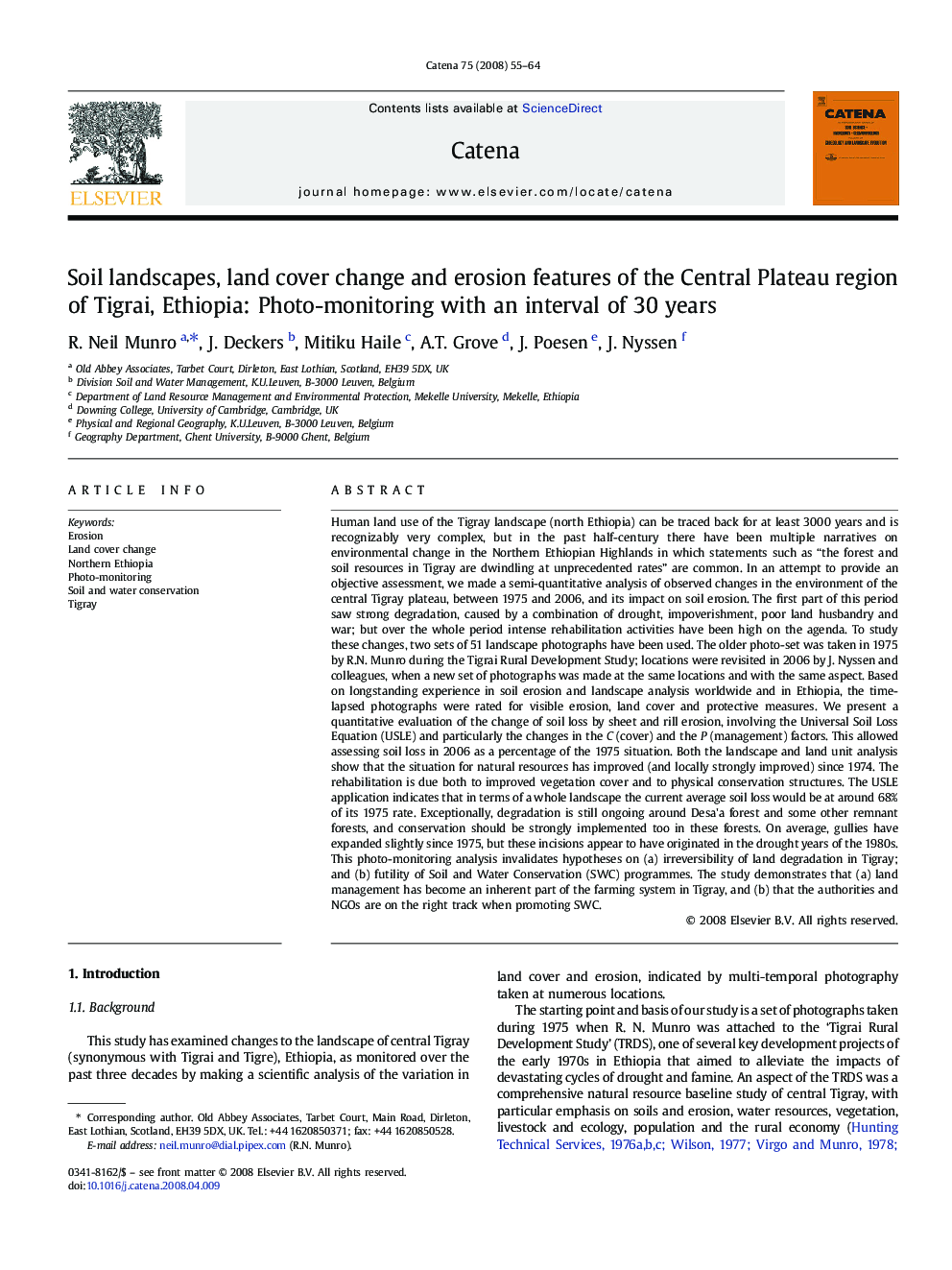| کد مقاله | کد نشریه | سال انتشار | مقاله انگلیسی | نسخه تمام متن |
|---|---|---|---|---|
| 4572389 | 1332173 | 2008 | 10 صفحه PDF | دانلود رایگان |

Human land use of the Tigray landscape (north Ethiopia) can be traced back for at least 3000 years and is recognizably very complex, but in the past half-century there have been multiple narratives on environmental change in the Northern Ethiopian Highlands in which statements such as “the forest and soil resources in Tigray are dwindling at unprecedented rates” are common. In an attempt to provide an objective assessment, we made a semi-quantitative analysis of observed changes in the environment of the central Tigray plateau, between 1975 and 2006, and its impact on soil erosion. The first part of this period saw strong degradation, caused by a combination of drought, impoverishment, poor land husbandry and war; but over the whole period intense rehabilitation activities have been high on the agenda. To study these changes, two sets of 51 landscape photographs have been used. The older photo-set was taken in 1975 by R.N. Munro during the Tigrai Rural Development Study; locations were revisited in 2006 by J. Nyssen and colleagues, when a new set of photographs was made at the same locations and with the same aspect. Based on longstanding experience in soil erosion and landscape analysis worldwide and in Ethiopia, the time-lapsed photographs were rated for visible erosion, land cover and protective measures. We present a quantitative evaluation of the change of soil loss by sheet and rill erosion, involving the Universal Soil Loss Equation (USLE) and particularly the changes in the C (cover) and the P (management) factors. This allowed assessing soil loss in 2006 as a percentage of the 1975 situation. Both the landscape and land unit analysis show that the situation for natural resources has improved (and locally strongly improved) since 1974. The rehabilitation is due both to improved vegetation cover and to physical conservation structures. The USLE application indicates that in terms of a whole landscape the current average soil loss would be at around 68% of its 1975 rate. Exceptionally, degradation is still ongoing around Desa'a forest and some other remnant forests, and conservation should be strongly implemented too in these forests. On average, gullies have expanded slightly since 1975, but these incisions appear to have originated in the drought years of the 1980s. This photo-monitoring analysis invalidates hypotheses on (a) irreversibility of land degradation in Tigray; and (b) futility of Soil and Water Conservation (SWC) programmes. The study demonstrates that (a) land management has become an inherent part of the farming system in Tigray, and (b) that the authorities and NGOs are on the right track when promoting SWC.
Journal: CATENA - Volume 75, Issue 1, 15 September 2008, Pages 55–64